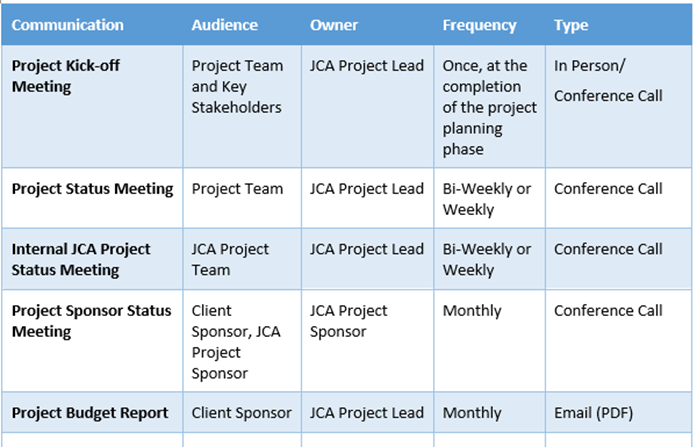How to Overcome the Top 10 CRM Implementation Roadblocks

Brittany Ivey
Senior Consultant
Did you know that more than 50% of CRM implementation projects fail?
Your system implementation lives at the intersection of people, process, and platform (we call these the 3 Ps). The 3 Ps support and reinforce one another, and a roadblock in any one of these areas can negatively impact the project. How can you successfully navigate these challenges?
We recently presented a webinar on CRM Implementations, and thought we’d share the top 10 most common roadblocks and how to avoid them.
Roadblock #1 – Lack of Buy-In
Without buy-in at all levels, your stakeholders may not understand why it’s important to attend meetings or dedicate time to the project, and they will not be as engaged as they need to be for success.
Start by identifying stakeholders and making sure they know WHY they’re involved, WHY the change is happening, and what it means for them and for the organization. Ensure you have a good Project Sponsor to align the stakeholders with the vision and objectives of the project and clear the path for those involved to make it a priority for the organization.
Roadblock #2 – Lack of Resources
CRM implementation projects require resources including time, money, and people. While you can’t add hours to the day, you can alleviate pain points with careful planning. You will need a strong Project Manager who can plan resources effectively. They will break down the steps and phases of the project, and then identify the tasks within each phase and who needs to accomplish them and when. They will identify the skillsets needed so that the correct subject matter expert is engaged at the right time.
Roadblock #3 – Lack of Knowledge
There’s always going to be a learning curve with any new system. But it’s not just the new system that you need to learn. In many cases, your stakeholders have never been through a CRM implementation project before, so you may also encounter a lack of knowledge about the process itself.
You must include your subject matter experts throughout the project. When you identify a gap in knowledge or skills, you can plan to fill that gap with training or by hiring a consultant to help you.
Roadblock #4 – Dirty Data
Dirty data can slow down your CRM implementation project by causing design and validation challenges. You don’t want to let bad data drive your decision making.
We recommend that you evaluate and clean your data before the implementation even begins. Resolving duplicate records, cleaning up code tables, and deleting obsolete information will make the conversion process smoother.
When reviewing data, ask yourself: is this data still relevant? Is this data necessary for a specific purpose, such as reporting or event planning? Does this data tell me something important about the constituent’s relationship with us? If the answer is no, the data may not need to be converted to the new system.
Roadblock # 5 – Resistance to Change
Resistance can be active or passive, and it can happen at any phase of the project.
It’s important to start with a good understanding of your organization’s internal culture. How does your organization typically approach change? Is your team used to managing and evolving, or are there cultural roadblocks to change? Knowing what change management is, and what it includes, will be critical for success in a project as large as an implementation. We recommend that you integrate your change management and project management plans.
Roadblock #6 – Communication Breakdowns
Communication breakdowns can occur between the software vendor and your staff, between project managers and project stakeholders, and even within your core team. When breakdowns occur, it can lead to confusion, which can cause delays, re-work, and disengagement.
They key to overcoming this roadblock is by starting with a good communication plan. We recommend you create a matrix of all your project stakeholder groups and think about creating points of communication throughout the project that are appropriate for each group.

We also recommend that you avoid miscommunication by keeping good documentation—not just the plans and status reports but the decision logs as well. Your team will make so many decisions during the implementation that you will forget what you decided and why. Write it all down and keep it centrally accessible.
Roadblock # 7 – Slow Adoption
You can have the greatest system in the world, but poor user adoption could still cause your project to fail.
Good user adoption starts with early buy-in. End users must be involved in determining system requirements and testing solutions. Provide process training—not just software training—and make sure workflows and processes are tested prior to go live so that everyone understands how to do their day-to-day jobs.
Roadblock #8 – Staff Turnover
Once again, we recommend good project management to prepare for this roadblock. As part of your risk management plan, identify the risk of key stakeholders leaving—and assess the likelihood of that happening and the possible impact. Based on that assessment, you can plan your risk response.
You can also lessen the impact of a staff departure by ensuring that project knowledge is documented and shared, so you don’t lose the knowledge along with the staff member.
Roadblock #9 – Unrealistic Expectations
This roadblock can really stop a project in its tracks. We see vendors who place unrealistic demands on their client’s staff, or projects that underestimate the staff time required to work on the project. We also see this occur when project stakeholders aren’t on the same page about what to expect from the system itself. They become unhappy with the way in which the new system accomplishes a task or creates an output, and they end up spending valuable time and resources requesting changes or customizations.
Start by establishing project guiding principles for the project—this is your up-front set of rules to help provide a basis for all project decisions. For example, your guiding principles could include a decision to implement a “vanilla” system by saying there will be no customizations.
Usually everyone is eager to start the project right away, but don’t rush the planning phase; ensure all resources know what is expected from them, when it will occur, and how much time it will take.
Roadblock #10 – Not Planning Past Go-Live
Once you have gone live with your new CRM, everything is great, right? Not always. What happens next can make the difference between success and failure.
Your go-live date is not the same as your project completion date. Good project management must continue after go-live to keep everyone engaged and following the same plan.
This includes a plan for ongoing training to reinforce new ways of doing things. It’s a good idea to set up “office hours”—a set time when anyone can drop in with questions or to request extra help outside of a group setting. There may also be post-go-live work to do, including building reports and integrations.
Key Takeaways
To quickly summarize some key takeaways.
- Identify key stakeholders and involve them from the beginning of the process. One way implementation projects can fail is when the right players aren’t involved.
- Evaluate the health of your database and clean data prior to migration when possible.
- Identify and employ a strong project manager. Many of these hurdles can be avoided with good planning.
- Make sure you include a risk management plan, a communication management plan, and a cutover plan to ensure everyone is on the same page.
Looking for more information? You can view the recording of our latest webinar on this topic.
A Great CRM Implementation Transforms your Organization
When implemented well, your CRM can ignite productivity and achieve your organization’s strategic goals. Whether you’re considering a system change, are in the middle of an implementation, or are post-go-live, we can help.

